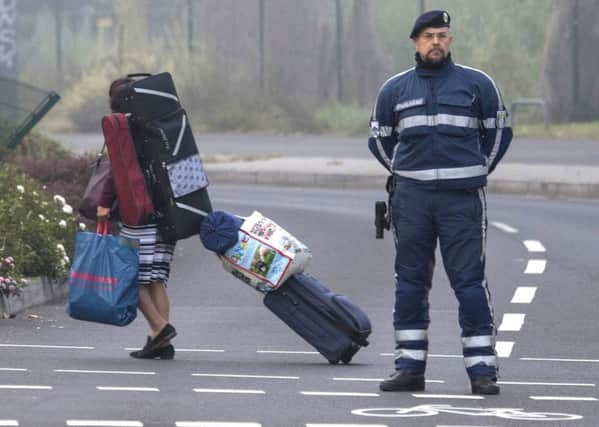Thousands of Germans evacuated before British wartime bomb defused


Hospital patients and the elderly are among those affected in what will be Germany’s biggest evacuation in recent history.
Construction workers found the 1.8-ton British bomb on Tuesday.
Advertisement
Hide AdAdvertisement
Hide AdOfficials have ordered residents to leave homes within a 1.5-kilometre radius of the site in Germany’s financial capital. Dozens of ambulances were prepared to pick up anyone unable to independently leave the danger zone.
Many residents said they were going to make the most of the day by visiting relatives or travelling to different parts of the city until it was safe to return home.
Police said the evacuation is roughly on schedule and that everyone has now been moved from the danger area.
More than 100 patients from two hospitals were moved on Saturday, including premature babies and people in intensive care. Some care home residents left early yesterday.
Fire and police chiefs in the city warned that an uncontrolled explosion of the HC 4000 bomb would be powerful enough to flatten an entire street. The bomb disposal operation is expected to take about 12 hours.
Police helicopters carrying heat-detecting cameras scoured the area as bomb disposal experts began their task. Officers guarded empty houses and apartments from burglars.
The evacuation area includes 20 retirement homes, an opera house, and Germany’s central bank, where half of the country’s gold reserves are stored.
The city opened shelters for evacuees to spend the day, and most museums opened their doors for free. Similar operations are still common 72 years after the war ended.
Advertisement
Hide AdAdvertisement
Hide AdAbout 20,000 people were evacuated from Koblenz before specialists disarmed a one ton US bomb on Saturday.
An average of about 2,000 tons of unexploded ordnance are found each year in Germany. It’s estimated that about half the 2.7 million tonnes of bombs dropped by Allied powers during the Second World War Two landed on German soil (compared to about 74,000 tonnes of bombs dropped on the UK by Germany).
Many of the bombs were equipped with malfunctioning time-delay fuses, and never went off.
Adding to the problem are Russian artillery shells, German hand grenades and tank mines, as well as Russian munitions from training facilities in post-war East Germany.
The problem is so widespread that Germany has a bomb-disposal unit, the Kampfmittelbeseitigungsdienst (KMBD), dedicated to the problem. Its technicians are among the busiest in the world, deactivating a bomb every two weeks or so – and they estimate their work will continue for decades to come.
Dozens of bomb-disposal technicians and hundreds of civilians died from uncontrolled explosions in the decades following the war. The rate of fatalities has slowed since, with 11 technicians said to have been killed in Germany since 2000.
But experts warn that the devices which remain could be getting more unstable as the munitions age and their fuses grow more brittle. Bombs are also being discovered in more built-up, harder-to-reach areas.
The problem is also worse in certain areas. Oranienburg, just outside Berlin, has the dubious distinction of being the “most dangerous town in Germany”. Under Adolf Hitler, it contained an armaments hub, aircraft plant, railway junction and a nuclear research facility – so it was a key target for the Allies.